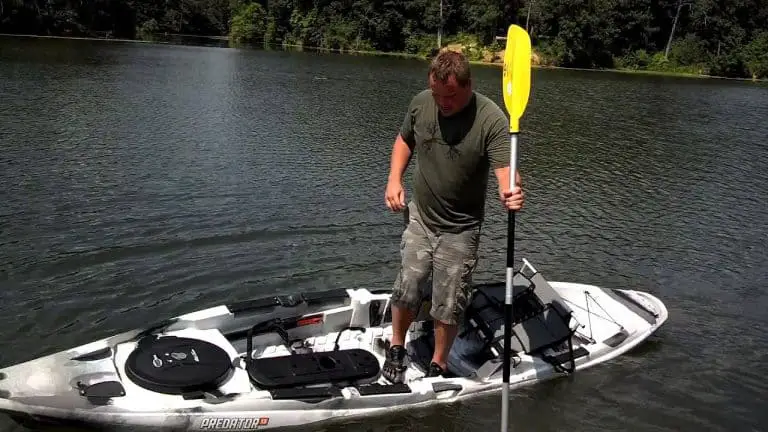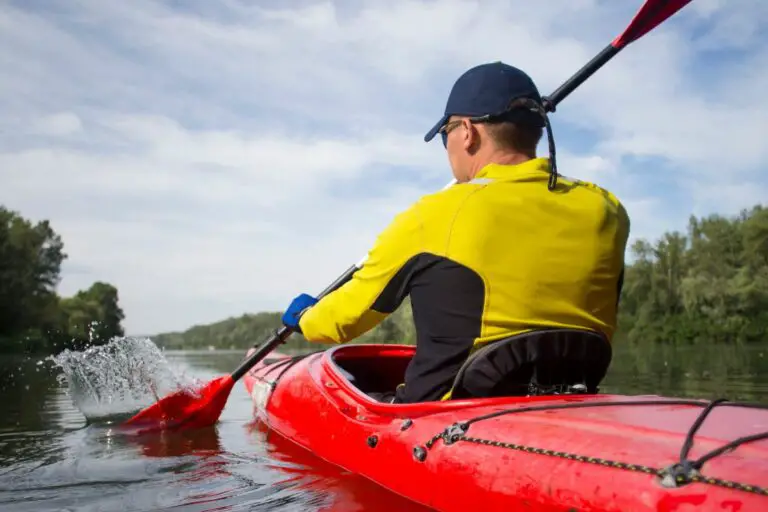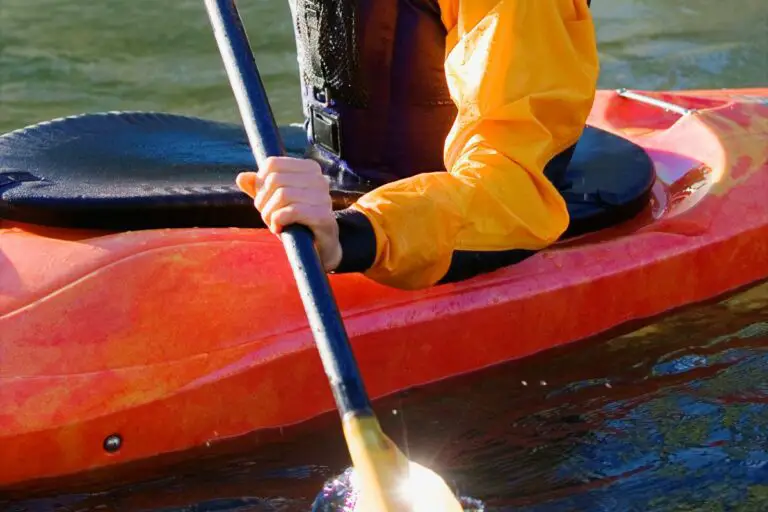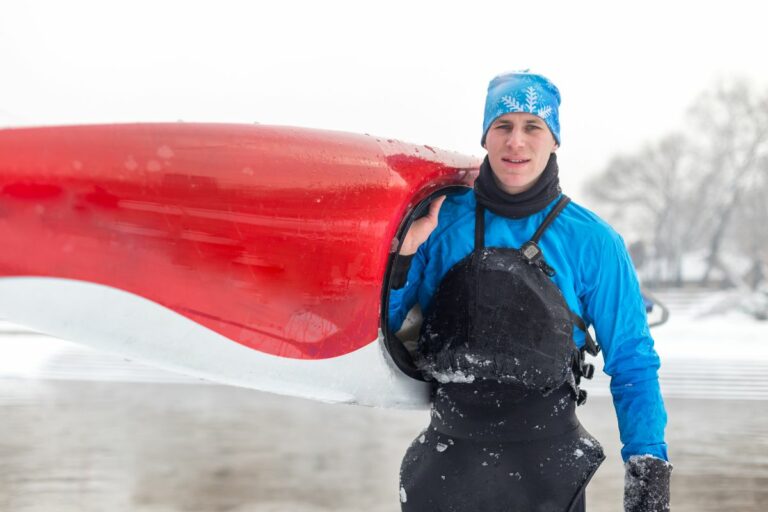Why Are Longer Kayaks Faster? Explained Simply
Before setting out on a kayaking adventure, you need to have a good understanding of your kayak’s abilities and the factors that affect its speed in order to be able to time your trip correctly. Longer kayaks are known to be capable of going faster than shorter kayaks.
So, why are longer kayaks faster? The reason longer kayaks are faster is that they allow for a more gradual slope of movement in the water which leads to reducing the opposing drag and resistance while the kayak is moving in a straight direction. Another reason is that longer kayaks have more volume.
Keep reading to learn more about how the length of the kayak can affect its speed and what other factors can affect your kayak’s performance. If you are ready for a Kayak upgrade, check out this guide to the best fishing kayaks for under $500 here.
Table of Contents
Are Longer Kayaks Really Faster?

Yes, longer kayas are faster than shorter kayaks. That is because longer kayaks move through the water in a more gradual manner than shorter kayaks. This helps in reducing the opposing drag while traveling in a straight direction.
Now, you’re probably wondering what drag is. It is basically the amount of resistance the kayak creates to oppose the force you’re applying on the paddles to make it move.
Generally, drag changes as the speed changes. So, when your kayak is not moving very fast there won’t be a lot of drag against it. But, as the kayak’s speed increases, the drag against it will also increase.
When the drag against the longer kayak is decreased, it allows it to achieve higher speeds than shorter kayaks.
Another reason longer kayaks go faster is that they have more volume which means they have more buoyancy and they float higher. This makes them glide faster over the water surface. In contrast, shorter kayaks have a lower volume which makes them sit deeper in the water.
How Much Faster Can a Longer Kayak Go?
There are some ways that kayak designers can test the theoretical maximum speed of a kayak. One way is by using computer simulations to see how increasing the kayak’s length and the maximum achievable speed. A second way is by trying out real kayaks with real paddlers.
However, the computer simulations are not always accurate. That is because what really determines how fast a kayak can go is the human factor – the kayaker’s skill and how much force they can apply to the paddle.
What Is the Theoretical Maximum Speed of a Kayak?
The theoretical maximum achievable speed is also known as the hull speed. It is determined by the length of the kayak and its value (in km/h) is calculated with the following formula: The square root of the length of the kayak multiplied by a factor of 4.5.
So, if the kayak is 18’ in length, the highest possible speed it can achieve is theoretically 6.6 miles per hour.
What Are the Other Advantages of Longer Kayaks?
Longer kayaks have several advantages other than their speed such as being easier to paddle. They are better when it comes to tracking and stability. They are also capable of carrying more weight loads without hindering performance.
Shorter kayaks, on the other hand, are lighter in weight, easier to transport and a lot less expensive. Their most important advantage is their maneuverability and ability to turn faster.
How Are Kayaks Classified According to Their Length?
Kayaks come in 3 different categories based on their length and the intended use. These 3 types are: recreational, light touring, and touring.
Let’s break down the differences between all 3 types of kayaks.
Recreational Kayaks
Recreational Kayaks are the shortest kayaks. They come at 12’ or under in length. They are good for navigating narrow waterways or other situations where you would require more maneuverability and the ability to make tight turns.
Another advantage of recreational kayaks is that they’re a lot easier to carry around and load into the water. They are very stable, but they are not the best when it comes to speed. So, they’re ideal for short distance trips.
Recreational Kayaks can be sit-on-top kayaks or sit-ins. You can learn about both types in my comparison of sit-in vs sit-on-top kayaks here.
Light-Touring Kayaks
These kayaks are between 12’ and 16’ in length. They are very stable and also faster than recreational kayaks. So, a light-touring kayak may be a better choice than a recreational kayak.
However, these kayaks are heavier than recreational kayaks, so it will take more effort to carry them and load them into the water.
Touring Kayaks
Touring kayaks are the largest kayaks. They can be over 16’ in length and they’re also thinner than the other types of kayaks.
This kayak is built for speed because of the combination of its length and thinness so it is ideal for longer distance trips.
What Are Other Factors That Affect a Kayak’s Performance?
There are other factors besides length that can affect the kayak’s performance.
Let’s take a look at some of these factors.
Hull Design
The way the hull design affects the kayak’s performance is really simple. Hulls with flat bottoms, hard chines, and greater flare offer more stability. While rounder hulls with soft chines and less flare offer less stability.
Width
The width of a kayak also has a great influence on its performance.
A long, thinner kayak with a bow shaped like a narrow V will be faster because the bow will slice through the water instead of piling it up in front of the kayak.
If the bow is broader on the other hand, it will be slower and it will require more effort to paddle because the hull has to push aside more amounts of water.
Symmetry
Kayaks can either be symmetrical meaning that the front half and the back half of the kayak are the same shape, or asymmetrical meaning they’re not the same.
Symmetry affects the efficiency of the boat as it moves through water as well as its ability to turn. Symmetrical kayaks are better when it comes to maneuverability and ability to turn while asymmetrical kayaks are better when it comes to speed as they have more length and volume.
There are two types of asymmetrical kayaks which are fishform and swedeform. Fishform kayaks have more volume ahead of the midpoint while swedeform kayaks have more volume behind the midpoint.
Before you leave, you should take a look at my guide on the dangers of sharks on kayaks here as well.
Related Questions
What’s the Fastest Speed for a Long Kayak?
The current record for the fastest speed a kayak can go is held by Brandon Nelson who went off a 24-hour expedition in 2013. He covered around 152 miles with his kayak and reached an average speed of 6.2 miles per hour.
Is A Sup Faster Than a Kayak?
No, a kayak is faster than a SUP when it comes to traveling in a straight line. Kayaks have the advantage of having a sitting position and a more pointed ship which allows it to move faster. However, this is not always the case as both kayaks and SUPs come in a variety of shapes that are designed for specific purposes.
Helpful Resources
Recreational Kayaking: The Ultimate Guide By Ken Whiting (you can also check the book on Amazon here)
If you liked the article, don’t forget to share it or pin it. Find the share and pin buttons below!








